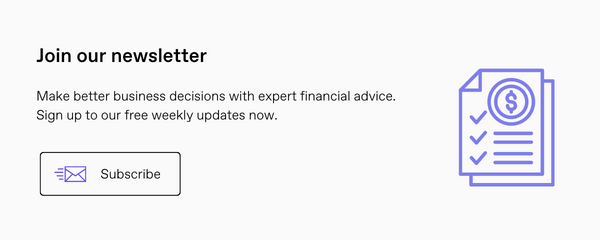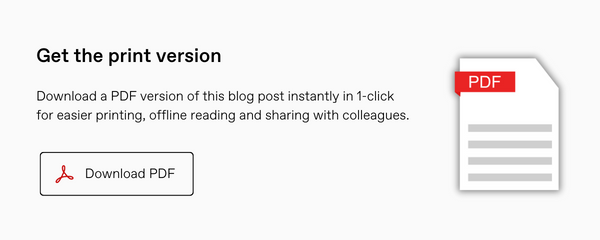How To Reduce Your Tax Accountant Fees
As we approach the end of the financial year, many business owners are keen to understand how much tax they’ll owe or if they’re due a refund, how to expedite that refund. In this article, we're sharing how to reduce your tax accountant’s fees and ensure you get your tax return and financials sorted efficiently.
IN THIS ARTICLE
→ How to Reduce Your Tax Accountant Fees
→ The Power of Expectation Management
→ 2. Negotiate Fees & Get a Quote
→ 3. Provide Detailed Information
→ Provide Accurate Descriptions
→ Consider the Accessibility of Your Financial Software
→ Create an Explanatory Document
→ [Template] Copy & Paste This Email to Your Tax Accountant
How to Reduce Your Tax Accountant Fees
As a business owner at this time of year, you're probably concerned about understanding your tax liability, or likely eager to receive your refund (if you’re due one) as soon as possible.
By adopting a methodical approach and establishing clear communication with your tax accountant, you can both reduce the accounting fees your business pays plus expedite the tax return process.
1. Improve Communication
The Power of Expectation Management
The first step is to ask your tax accountant specifically what you can do to get their fees down. For example:
- “What can I do to lower our accounting fees this year?”
- “How can we improve the way we provide you with information?”
- “How can we respond to your queries quicker?”
- “Do we need to provide more in-depth information?”
Set Expectations Early
Engage with your tax accountant right after the financial year ends. For Australian businesses, the financial year ends on June 30th, so touch base with your tax accountant in early July.
Then specifically ask for a commitment from your accountant for the completion date of your tax return and financials. For example:
- “If we get our information to you by July 30th, and we respond to your queries within 1 to 2 business days, can you commit to completing our tax return and financials by August 31st?”
In our experience, we’ve never had somebody push back and say they can’t do that when you communicate clearly and directly.
You may find this surprising, but for tax accountants this is a quieter time of year. So the sooner you request to begin the process, the sooner they can plan for it and put your business into their workflow.
Lastly, once your tax accountant does commit to commencing the process, ensure you provide all necessary information and respond to queries promptly.
2. Negotiate Fees & Get a Quote
Once you’ve established how and when information is going to be delivered, ask your accountant for a quote or an estimate of the cost. This step ensures you both have clarity around your fee expectations, and can hold them accountable to this.
3. Provide Detailed Information
Often the most time-consuming process for a tax accountant is reviewing your company’s balance sheet and profit and loss statement.
Most business owners have multiple entities and individuals associated with the business, so your tax accountant’s goals are simple: proving every balance on your business’ balance sheet, and ensuring nothing on your profit and loss statement is misallocated.
Provide Accurate Descriptions
To make the review process as simple as possible, provide detailed descriptions for all your transactions. Instead of a vague reference like "JB Hi-Fi," provide specifics such as "JB Hi-Fi: 4 computer monitors, 12 inches.”
Consider the Accessibility of Your Financial Software
If you're using a cloud-based system such as Xero, MYOB or QuickBooks that your tax accountant can log into and see transactions themselves, you might not need to provide all the general ledger details.
However if you use an industry-specific system rather than a general accounting system, which they’re unlikely to get access to, you may need to provide more information at a transactional level (via exporting PDFs, for example).
Create an Explanatory Document
Develop an explanatory document to detail discrepancies or unusual transactions. This helps pre-empt any questions your accountant may have.
For example, we’ve seen where a client has made a mistake on their last bank reconciliation of the financial year, but they provided an explanation along the lines of, “The reconciliation says $100 but the statement actually says $98, and we've rectified it at the start of July next year”, and the tax accountant was able to sign off on that.
4. Verify Your Financials
Your tax accountant needs to verify every balance on the balance sheet. Here's a checklist of the documents you need to provide for a smoother process.
Assets
- Reconciled bank accounts with statements
- Reconciled accounts receivable
- Prepayment schedules
- Verification of stock on hand and work in progress
- Invoices for assets purchased during the financial year
Liabilities
- Credit card statements
- Reconciled trade creditors or accounts payable ledgers
- Bank loans & bank statements
- Documents for new equipment, finance leases, hire purchases/loans
- GST or VAT or tax sales reports
- PAYG / PAYGW / PAYE liability reconciliations
- Superannuation/pension liability reconciliations
- Reconciled leave entitlements
Equity
- Clearly narrated personal drawings and tax payments
- Reconciliation of any inter-entity loan account balances
Profit & Loss Statement
- Wages and superannuation or pension accounts balancing back to payroll reports
- Travel expenses (excluding non-deductible items like personal vacations)
- Repairs and maintenance
- Computer expenses
- Staff amenities
[Template] Copy & Paste This Email to Your Tax Accountant
Copy and paste this in an email to your tax accountant:
Hi [Name], I'd like our business to get an early start on wrapping up the financial year.
If we get the required information to you for [Business Name] by 30 July, and we ensure that we respond to all queries within 1 to 2 business days, can we expect to have our financials and tax returns completed by 31 August?
Regards,
[Your Name]
Final Takeaway
By following these steps, you can maximise the efficiency of your tax accounting process while minimising costs:
- Seek improvement: Ask your accountant how to improve the information you provide.
- Set early expectations: Ensure both parties agree on a timeline.
- Obtain a quote: Get an estimate of annual costs.
- Provide detailed information: Offer comprehensive and accurate financial data.
Implementing these strategies will enhance your relationship with your tax accountant and ensure a smoother, more cost-effective end-of-year process.
Learn everything we teach our clients for free
Join 350+ business owners & key decision-makers who receive free weekly business & accounting tips, delivered straight to your inbox every Wednesday. Sign up now.




